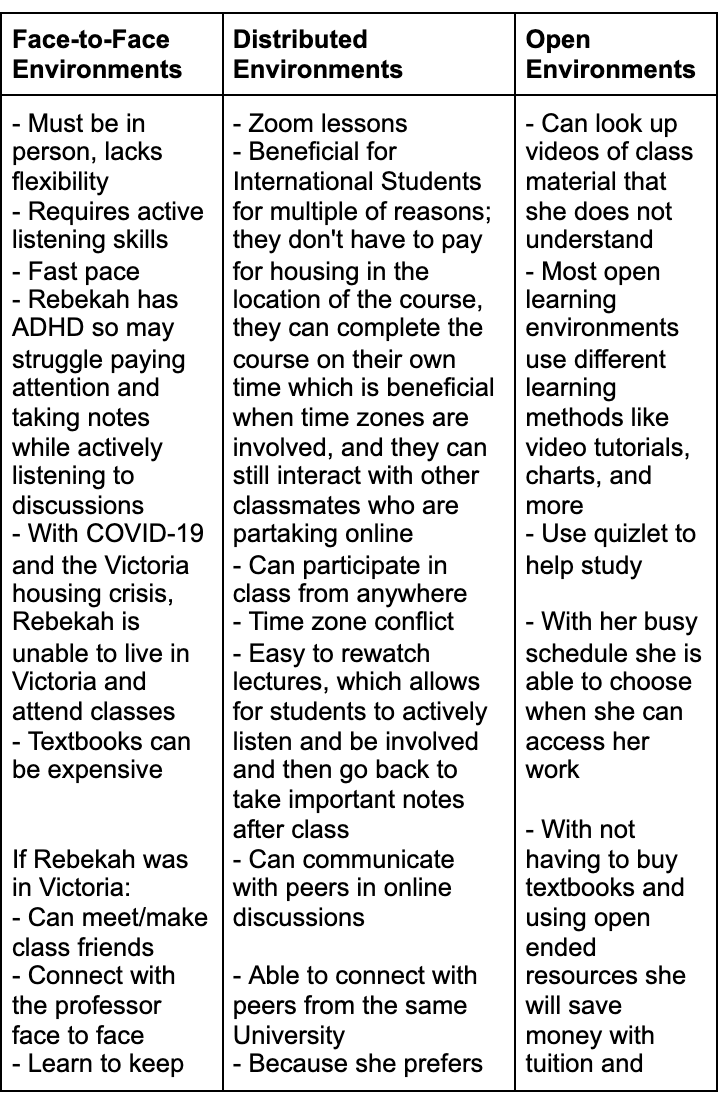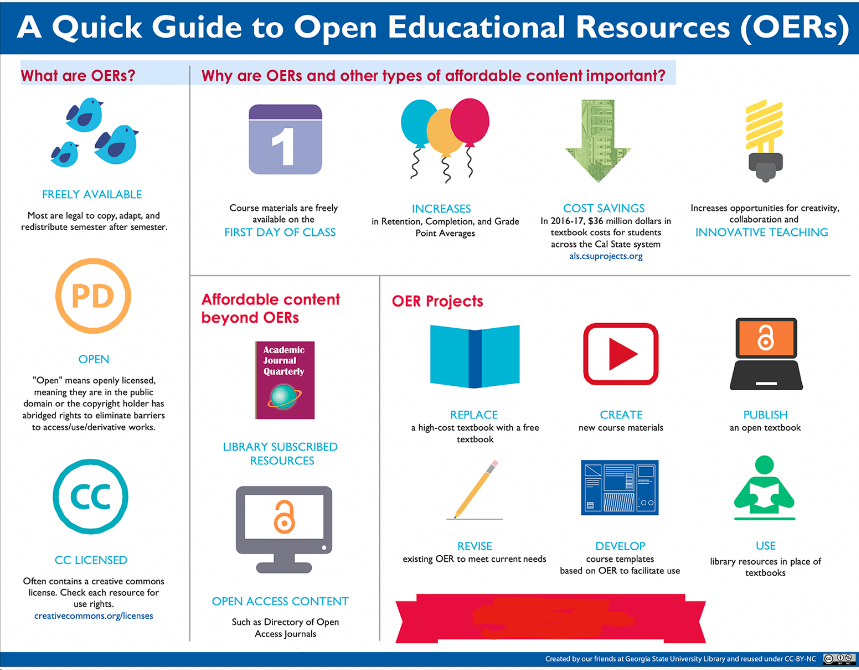Learning Outcome #2 – Explore and engage with current literature on the distributed and open education movement
With the learning outcome #2, I feel that my most recent blog on topic 4 highlights my overall learning about the open education movement:
The test from our reading was very intriguing to me. I couldn’t believe how something so short could be so beneficial! I was able to apply the test to my previous educational experiences and I was satisfied when I was able to determine if something was an OER or not. I think this test will be very helpful to me in the future, especially considering that I want to introduce a lot more of an open-pedagogy to my teaching. Below is a screenshot from my comment on Kayla’s topic 4 blog post.

She mentioned how we can use this test as a tool to determine the OER we want to bring into a lesson is actually an OER. I hadn’t thought of this when I wrote my post, so I am thankful I read Kayla’s, because I will definitely be using this in the future!
As well, our pod project surrounded the topic of distributed and open learning, so I feel as though I learned a lot from this project alone. Below, you can see the chart that we worked out to compare the three different learning environments. This chart alone was really helpful to my understanding of what the differences between distributed and open learning actually are.

From this information we gathered together, we were all able to take our characters’ persona, and agree on a learning environment for that person. This project was actually pretty fun, and it was nice being able to meet up with my members and work on something that we were all interested in – education!
One image that I wanted to show was found by Kiana in her discussion #4 post. I was really impressed with this image that she found, because I think it really sums up our learning nicely. It’s a great way to determine whether something is open and an OER or not. Thank you Kiana for sharing such a great visual! Below is also my comment from her same blog.


I also felt that some of what I wrote in my discussion #3 post was relevant to the literature of distributed and open learning environments. Mays’ (2017) article discusses open pedagogy, and how it connects the theories of open education to open educational resources (OER’s). It is the praxis that educators partake in to commit to a learner-driven education. I think that learner-driven education is a way of the future, and educators must be willing to adapt to these times. By engaging with an open-pedagogy, we will be able to make education more accessible, particularly with post-secondary.
I was able to learn a lot in this topic and learning outcome. Before this class, I had no idea what an open-pedagogy even was. I have now learned that I definitely want to engage with this praxis. I think that I learned just how important accessibility and equity is with education, and how it isn’t always present. In today’s world, we should be working towards making education more available to everyone, rather than keeping it the same. This matters to me, because I want to create a classroom environment which enables everyone to have equal access to the materials and resources I use. With all the information I have learned, I think that I will be able to make this happen, by using the OER’s we have discovered, and encouraging the use of distributed learning for my students.
Resources:
Mays, E. (Ed.). (2017). A guide to making open textbooks with students. Rebus Community. Retrieved from: https://press.rebus.community/makingopentextbookswithstudents/chapter/open-pedagogy/
